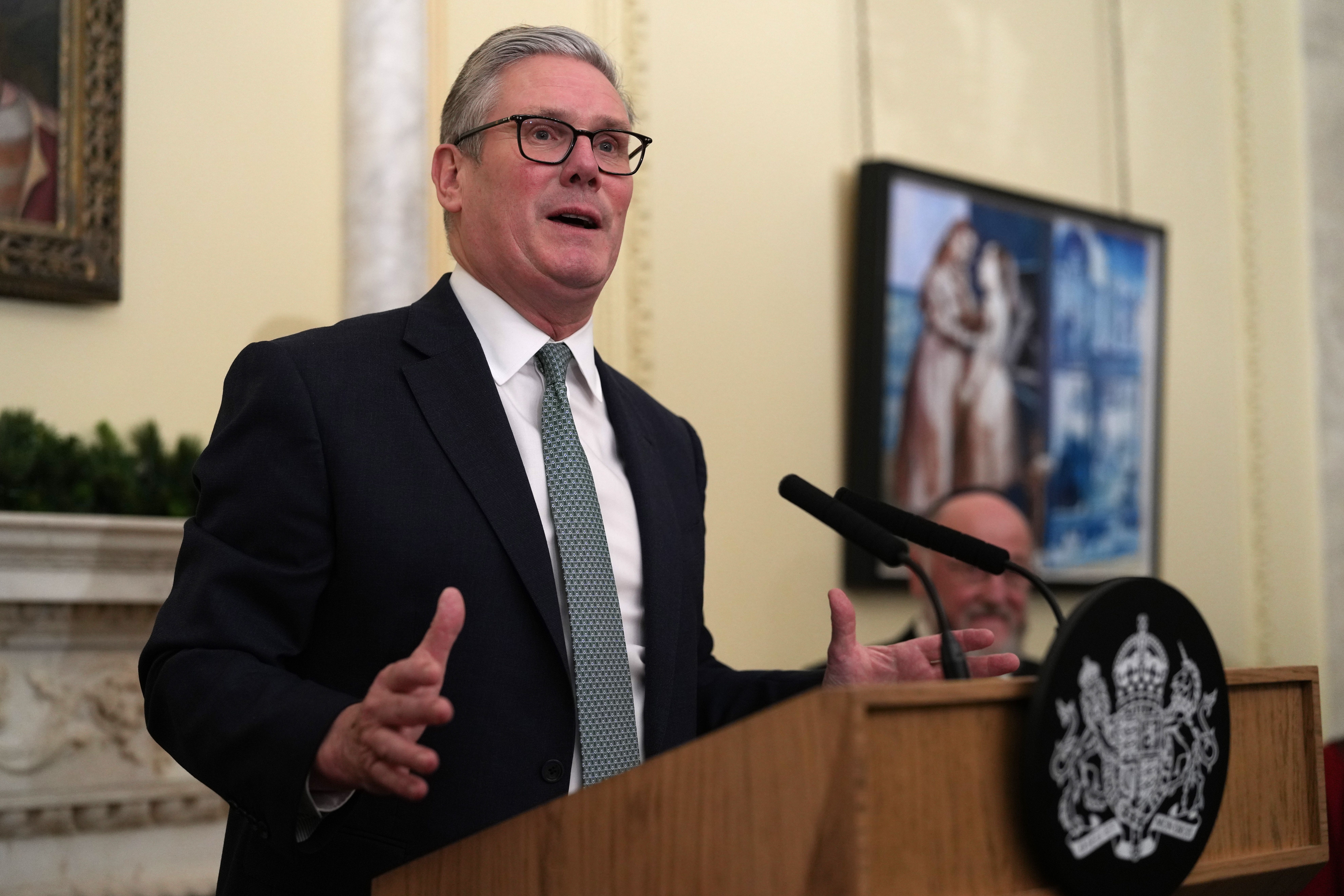Rachel Reeves has been warned that there are more challenges to come in 2025, as the chancellor gears up for her spending review amid flatlining economic growth.
Carl Emmerson, deputy director of the Institute for Fiscal Studies (IFS), said the multi-year spending review, expected to be published in June, will be a “very big challenge” for the government after economic growth in the UK stalled.
She has ordered a line-by-line review of spending, with departments ordered to find “efficiency savings” of 5 per cent of their budgets.
The latest Office for National Statistics figures showed the economy contracting by 0.1 per cent in October following a similar fall in September – the first time gross domestic product has shrunk in two consecutive months since the pandemic hit in March and April 2020.
Meanwhile, growth from July to September was revised down from 0.1 per cent to zero by the ONS and living standards fell.
The Bank of England is also now expecting zero GDP growth between October and December.
The Office for Budget Responsibility’s forecast is for gross domestic product (GDP) to grow 2 per cent in 2025, but a Treasury-compiled list of independent forecasters showed an average of just 1.3 per cent growth in their latest estimates for 2025, something which could hit the public finances with lower-than-expected tax receipts and increased costs.
While Mr Emmerson commended the chancellor’s focus on investment, saying it could deliver long-term benefits, he warned that in the short term any failure to deliver growth could leave her facing more questions on tax and spending.
“The outlook is uncertain. She might get lucky. It’s possible growth will exceed the OBR’s forecast, things could go very well.
“But, equally, she could get unlucky. And I guess we don’t have much of a sense of what she would do”, he said.
“If she got unlucky, where would that leave their commitment to be delivering growth? Not very well. And what would she be doing on the public finances, given she seems to be unkeen on coming back for more taxes?
“She’s not given herself huge wiggle room against her fiscal targets and the spending plans – while she topped up day-to-day spending a lot this year and next – from April 2026 onwards, the spending plans look pretty tight.”
Mr Emmerson added: “The very big challenge is going to be that spending review, because she’s confirmed the allocations for the current year. She’s set the allocations for the coming year, but they’re the two years in which she topped the plans up, and things looked much more manageable.
“The period beyond that looks really quite difficult, and so the exercise of getting a spending review to stick that the Cabinet agrees to isn’t going to be easy.
“You’ve got so many competing needs for more spending. And actually that’s an area where the extra spending didn’t look particularly focused on growth – I’m not saying it was the wrong thing to do, but lots of money for the NHS, lots of money for climate change, lots of money for justice.
“You can make the case for that spending, but I don’t think it’s the most obvious areas of spending, if you’re only worrying about growth.”

Sir Keir Starmer has stressed that he wants people to feel the benefits of economic growth, rather than simply being focused on a “line on a chart” showing GDP.
But the Resolution Foundation think tank suggested a mixed picture in terms of the impact of the government’s plans on living standards.
The think tank’s interim chief executive Mike Brewer said the “budget tax-rise gamble from the chancellor is that, while people may not be better off in purely financial terms, they will feel better off if we can have better, less dysfunctional public services”.
The Resolution Foundation’s analysis of “real living standards”, factoring in both disposable income and the “benefits-in-kind” that households get when they use public services, indicated that low-to-middle income families would do best.
On average, non-pensioners in the bottom half of the income distribution will see their real living standards rise very slightly – by 0.2 per cent, the equivalent of £28, between 2024-25 and 2025-26 – while those in the top half will see their real living standards fall, by 0.4 per cent or £140.
But the poorest households are hit hard by rising housing costs and hikes in council tax while also being affected by real-terms cuts to social security payments. The richest households do not rely on public services as much and benefit less from rises in minimum wages.
“Despite the government’s new targets for rising disposable incomes in its plan for change, the living standards outlook for 2025 is hardly a cause for celebration: disposable income is likely to fall, and if households are to feel better off, then it will only be if they see the benefits from spending more on public services”, Mr Brewer said.
Rising costs will also squeeze living standards, with official figures showing the rate of Consumer Prices Index (CPI) inflation rose to 2.6 per cent last month, its highest level since March and the second monthly increase.
Ms Reeves said: “The challenge we face to fix our economy and properly fund our public finances after 15 years of neglect is huge.
“But this is only fuelling our fire to deliver for working people. The budget and our Plan for Change will deliver sustainable long-term growth, putting more money in people’s pockets through increased investment and relentless reform.”







